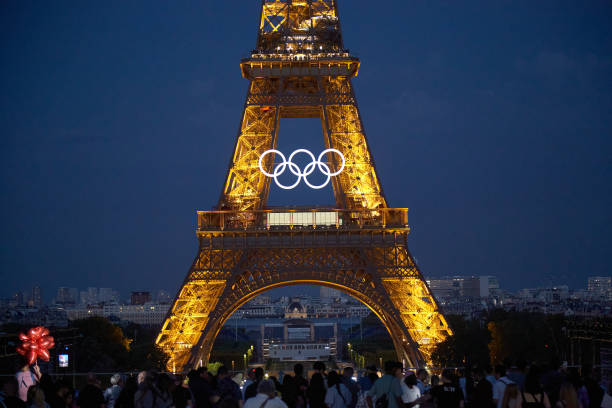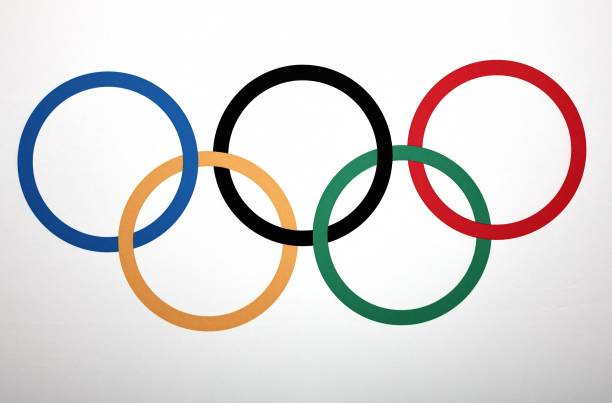The Olympic rings are one of the most recognizable symbols of Unity and the world’s connection between Athletes and games. Olympic rings represent the word nature and unity of sports. They embody the spirit of competition, camaraderie, and cultural exchange that the Olympics have promoted for over a century. But what do the rings really mean, and how did they come to be? Here we will discuss History, design, and all about rings.
Table of Contents
ToggleOlympic Rings: History and origin at a glance
The history of the Olympic rings begins with Pierre de Coubertin. Coubertin, the founder of the modern Olympic Games. In 1913, P. D. Coubertin introduced the design to represent the union of the five continents and the meeting of athletes from around the world at the Olympic Games.
The rings were first officially used for the first time in the 1920 Summer Olympics in Antwerp, Belgium. This design was a visual representation of PD Coubertin’s vision for the Olympics as a means of fostering international friendship and unity.
Olympic Rings: Design and Symbolism
The Olympic rings are made up of five rings. These five rings overlapped each other. On a white background, there are five colors blue, yellow, black, green, and red. According to history, each color belongs to a separate continent; nevertheless, each ring represents a different continent. Rather, the colors were selected for each nation. The aggregation of the Olympic journey, as at least one ring represents one nation.
The Olympic symbol has five overlapped rings of the same dimensions. Each ring has a different color. When used in its five-color version, all colors shall be from left to right – Blue, Yellow, Black, Green, and Red.
These rings are overlapped from left to right. The Blue, black, and red rings are set at the bottom and the Yellow and Green rings set at the bottom.
Olympic Rings: Representing the Continents
It is a global myth is the colors of the Olympic ring are present to a specific continent. The official view is that the rings represent the union of the five inhabited continents and the meeting of athletes from around the world.
The International Olympic Committee (IOC) has clarified that no particular ring is assigned to any specific continent, which emphasizes collective unity rather than individual contrast.

Modification in Olympic Rings over Time
The emblem of the Olympic rings has remained relatively consistent since its inception, though there have been slight variations in presentation. Initially, the rings were hand-drawn and varied slightly in appearance. Over time, they have been standardized and stylized to fit modern branding needs, maintaining their core elements while adapting to new media formats.
Cultural Impact and Acceptance of Rings
The Olympic rings are more than just a symbol of the Games; it’s a global icon of unity and peace. Their presence extends beyond the sporting world, often used in cultural events, educational programs, and even political discourse to symbolize cooperation and harmony among nations. The rings are a reminder of the potential for sports to bridge cultural and geographical divides.
Allowable Protection and Usage of rings
As a symbol with global acceptance, the Olympic rings are protected under international trademark laws. The IOC has strict guidelines for their use to prevent unauthorized commercial exploitation and to preserve their integrity. Any usage of the rings requires permission from the IOC, ensuring that they are only linked with official Olympic activities and sponsors.
Controversies and Misuse of Rings
Despite the strict regulations, there have been instances of misuse and controversies surrounding the Olympic rings. Unauthorized use of the symbol can lead to legal disputes, and the IOC has been vigilant in protecting its intellectual property. There have also been debates over the rings’ association with commercial interests, as some argue it dilutes the symbol’s original meaning.
Olympic Rings and Modern Media
In the age of digital media, the Olympic rings have found new expressions and adaptations. They are featured in various forms of media, from traditional advertisements to social media campaigns. The symbol’s versatility allows it to be integrated into different platforms, maintaining its relevance in an ever-changing media landscape.
Olympic Rings in Merchandise and Monument
The Olympic rings are also a major component of Olympic merchandise. From clothing to collectibles, the symbol is used to create a wide range of products for fans and collectors. The official merchandise not only serves as a memento for spectators but also helps fund the Games and support athletes.
Click to learn about the New Name of Decathlon.
Educational and Inspirational Value of Rings
Beyond their commercial and cultural significance, the Olympic rings also have educational value. They are used as a teaching tool to explain concepts of global unity, sportsmanship, and the importance of physical activity. The rings inspire not only athletes but also fans worldwide, embodying the Olympic motto of “Citius, Altius, Fortius” (Faster, Higher, Stronger).

Cultural and Artistic Interpretations
The Olympic rings have been reinterpreted in various cultural and artistic contexts. They have been featured in artworks, performances, and even fashion shows, reflecting the diverse ways in which the symbol resonates with people around the world. These creative expressions celebrate the Olympic spirit in unique and personal ways.
Future of the Olympic Rings
As the world evolves, so too does the role of the Olympic rings. They continue to be a relevant and powerful symbol, adapting to new cultural and technological contexts. While the core design is likely to remain unchanged, the ways in which the rings are presented and used will continue to evolve, reflecting the dynamic nature of the Olympic movement.
Conclusion
The Olympic rings are a timeless symbol of unity, peace, and the global spirit of competition. They transcend cultural and geographical boundaries, reminding us of the shared human experience. As we look to the future, the rings will undoubtedly continue to inspire and bring people together, upholding the values of the Olympic Games.
FAQ’s
What do the 5 Olympic rings stand for?
The five interlaced Olympic rings symbolize the union of the five continents and the gathering of athletes from around the world at the Olympic Games. While often associated with specific continents, the colors of the rings (blue, yellow, black, green, and red) actually represent the colors found in the flags of all nations at the time of their creation.
Why are there only 5 Olympic rings when there are 7 continents?
The five Olympic rings represent the five inhabited continents: Africa, America (North and South America combined), Asia, Europe, and Oceania. While there are actually seven continents, the Olympic symbol was created with a focus on representing the major inhabited landmasses of the world.
What is the Olympic motto?
The Olympic motto is “Citius, Altius, Fortius – Communiter,” which translates to “Faster, Higher, Stronger – Together.” This updated motto emphasizes the spirit of unity and collaboration in addition to the pursuit of athletic excellence







